Formula C5H4O3 Density 550 kg/m³ | Molar mass 112.0835 g/mol | |
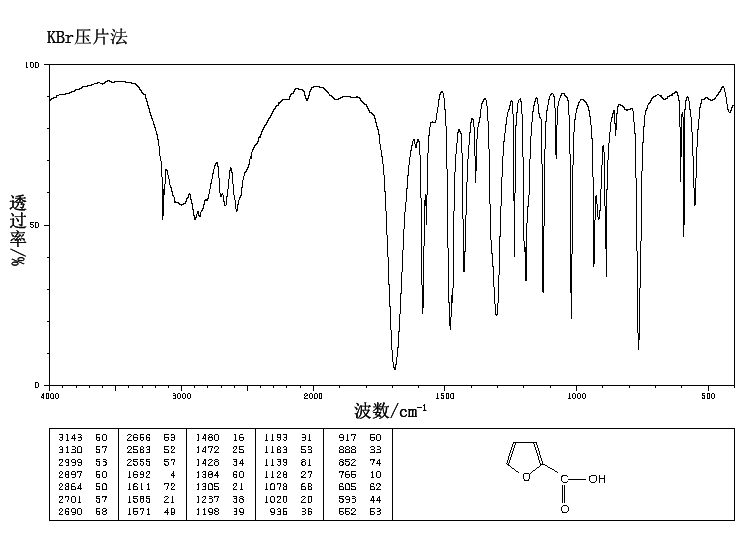 | ||
Related compounds Appearance White/ Off-White (Beige) Crystalline Powder | ||
2-Furoic acid is a heterocyclic carboxylic acid, consisting of a five-membered aromatic ring and a carboxylic acid group. Its name is derived from the Latin word furfur, meaning bran. The salts and esters of furoic acids are known as furoates.
Contents
- History
- Preparation and synthesis
- Applications and occurrences
- Reactions
- Importance in optic technology
- 2 Furoic acid in foods
- Hazards
- References
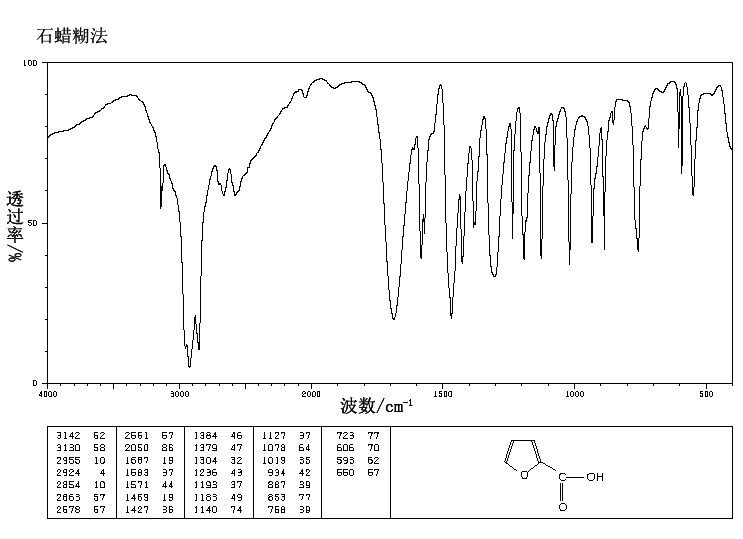
2-Furoic acid is an organic compound most widely found in food products as a preservative and a flavoring agent. Other uses for 2-furoic acid include nylon preparation and optic technologies.
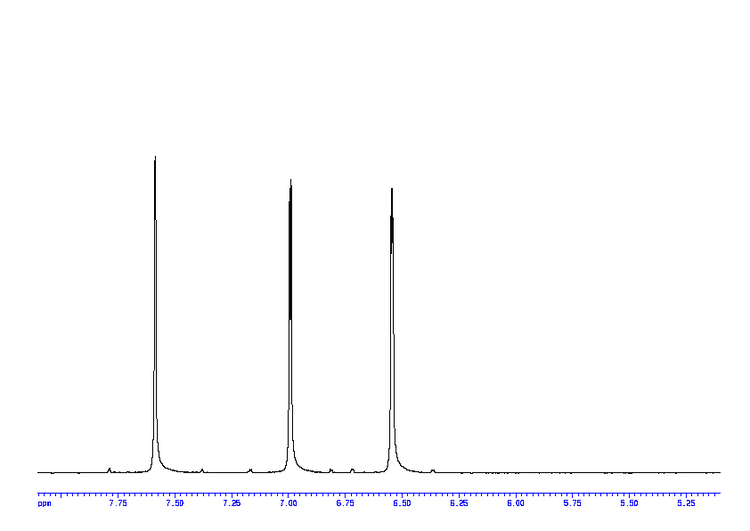
History

2-Furoic acid was first described by Carl Wilhelm Scheele in 1780 as the first derivative of the compound furan. Since then, the compound's reactivity with different substances and organisms was tested. It was discovered that 2-furoic acid can be the sole source of carbon and energy for the organism Pseudomonas putida. The organism aerobically degrades the compound.
Preparation and synthesis
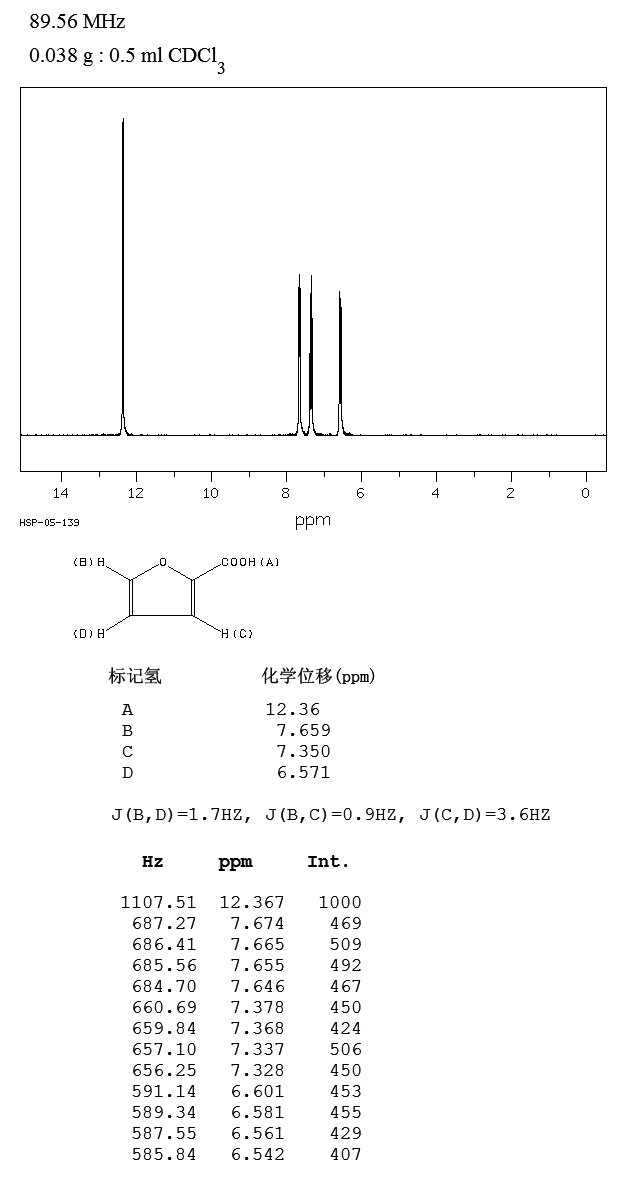
2-Furoic acid can be synthesized by the oxidation of either furfuryl alcohol or furfural. This can be achieved either chemically or biocatalytically. Currently the industrial route involves the Cannizaro reaction of furfural in an aqueous NaOH solution; this route produces both 2-furoic acid and furfuryl alcohol. The bio-catalytic route involves the microorganism Nocardia corallina. Experiments involving this microbial conversion resulted in high yields: 98% from 2-furfuryl alcohol and 88% from 2-furanaldehyde. Oxidation with N. corallina is unique because most other microorganisms produce two products from the oxidation, the acid and the alcohol. Furthermore, aromatic ring destruction does not occur.
Applications and occurrences
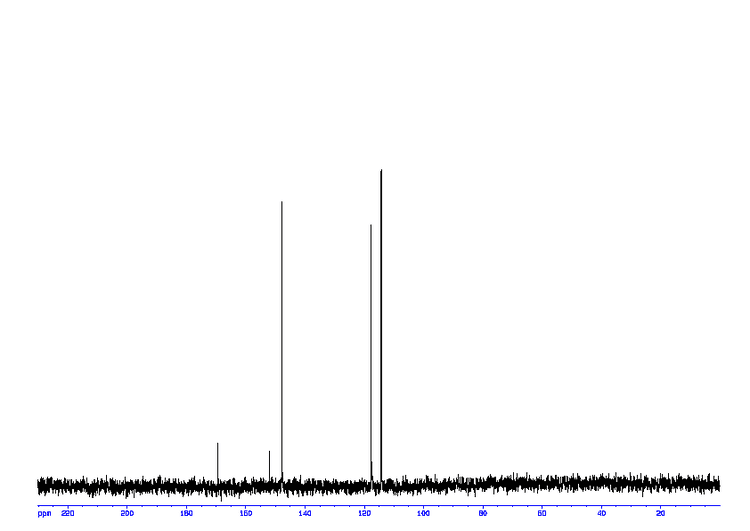
In industrial use, 2-furoic acid is a preservative, acting as a bactericide and fungicide. It is also considered an acceptable flavoring ingredient and achieved a generally recognized as safe (GRAS) status in 1995 by the Flavor and Extract Manufacturers Association (FEMA). 2-Furoic acid is characterized as a colorless liquid and has a distinct odor described in the Encyclopedia of Food and Color Additives as sweet, oily, herbaceous, and earthy. 2-Furoic acid is often used as a starting material for the production of furoate esters. It and its derivatives also aid in the production of nylons, and are often used in biomedical research.
Reactions

For the most part 2-furoic acid is relatively stable. However, 2-furoic acid is reactive with oxidizing materials. It is not reactive with reducing agents, combustible materials, organic materials, metals, acids, or alkalis.
Importance in optic technology
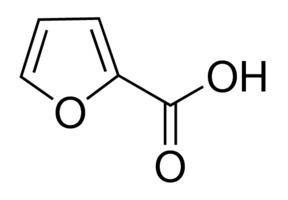
2-furoic acid may have an important role in the field of optic technology. Studies concerning the preparation of 2-furoic acid crystals have shown indication of several favorable properties of non-linear optical materials (NLOs). These crystals are highly transparent in the 200–2000 nm, wavelength region, are stable up to 130 °C, and generally have low absorption in the UV, visible, and IR spectrums. In optical and dielectric studies, 2-furoic acid crystals have been shown to have decreasing dielectric constants with increasing frequencies. This could mean that the crystals may act as paraelectrics in the temperature range before 318 K and ferroelectrics in temperature ranges after 318 K. These qualities indicate that 2-furoic acid crystals will have enhanced optical quality with less defects, which is important in the application of optical devices. Depending on the process of crystal formation, the surface of the grown crystals is generally smooth, with occasional microcrystals on the surface.
2-Furoic acid in foods
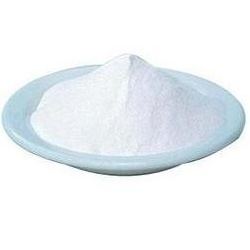
2-furoic acid helps sterilize and pasteurize many foods. The main mechanism that produces the 2-furoic acid for food sterilization is known as the Cannizzaro reaction of 2-furfural.
Hazards
Research on the effects of 2-furoic acid in rats showed an increase in bile salts and acute toxicity suggesting potential toxic effects. 2-Furoic acid may also cause mutagenic effects in bacteria and yeasts, leading to damage and irritation to the gastrointestinal tract, respiratory tract, skin, and eyes.
